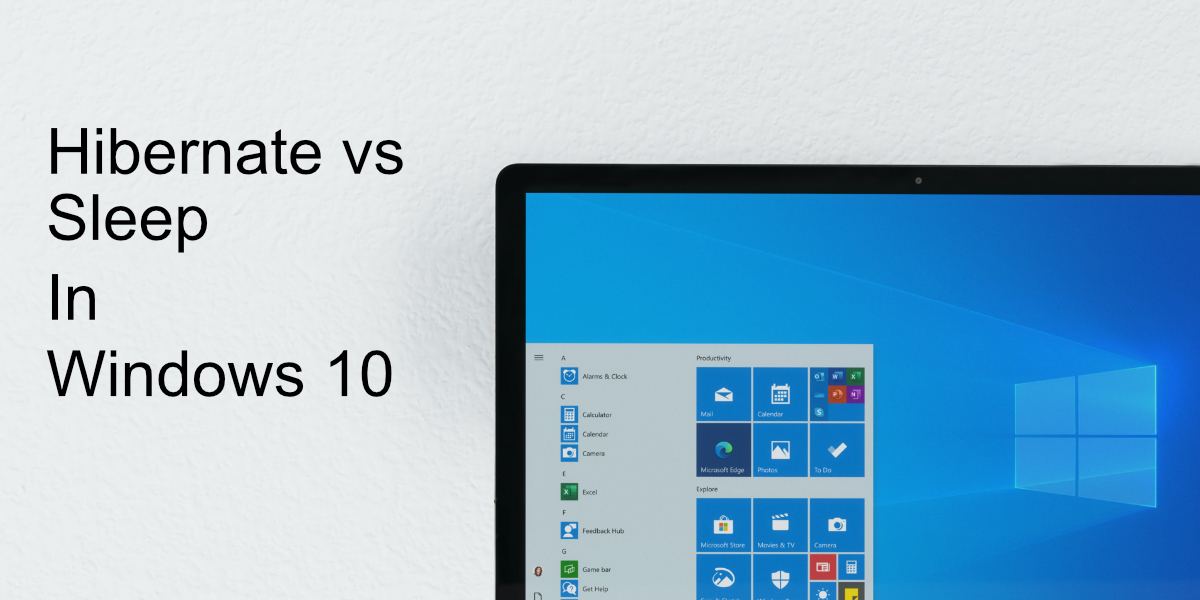
- HIBERNATE VS SLEEP COMPUTER SOFTWARE
- HIBERNATE VS SLEEP COMPUTER CODE
- HIBERNATE VS SLEEP COMPUTER WINDOWS
On systems where S0ix suspension does not provide the same energy savings as the regular S3 sleep, or when conserving energy is preferred to a quick resume time, changing the default suspend method is possible.

Also see systemctl(1), systemd-sleep(8), and systemd.special(7). See Power management#Sleep hooks for additional information on configuring suspend/hibernate hooks. This is the default interface used in Arch Linux. Systemd provides native commands for suspend, hibernate and a hybrid suspend see Power management#Power management for details. To automatically suspend/hibernate on certain power events, such as laptop lid close or battery depletion percentage, you may want to look into running Acpid. Actually hooking them up to power buttons or menu clicks or laptop lid events is usually left to other tools. The goal of these packages is to provide binaries/scripts that can be invoked to perform suspend/hibernate.
HIBERNATE VS SLEEP COMPUTER SOFTWARE
The uswsusp ('Userspace Software Suspend') tools provide wrappers around the kernel's suspend-to-RAM mechanism, which perform some graphics adapter manipulations from userspace before suspending and after resuming. On modern kernels, writing appropriate strings to /sys/power/state is the primary mechanism to trigger this suspend.
HIBERNATE VS SLEEP COMPUTER CODE
The most straightforward approach is to directly inform the in-kernel software suspend code (swsusp) to enter a suspended state the exact method and state depends on the level of hardware support. Using low level interfaces directly is significantly faster than using any high level interface, since running all the pre- and post-suspend hooks takes time, but hooks can properly set the hardware clock, restore wireless, etc. Though these interfaces can be used directly, it is advisable to use the high level interfaces to suspend/hibernate. There are multiple low level interfaces (backends) providing basic functionality, and some high level interfaces providing tweaks to handle problematic hardware drivers/kernel modules (e.g. If the battery is depleted, the system can be resumed from disk, which is much slower than resuming from RAM, but the machine's state has not been lost. Therefore, if the battery is not depleted, the system can resume instantly. Saves the machine's state into swap space, but does not power off the machine. Hybrid suspend (aka hybrid sleep) A hybrid of suspending and hibernating, sometimes called suspend to both.



Until then, there is zero power consumption. When the machine is powered on, the state is restored. Saves the machine's state into swap space and completely powers off the machine. Suspend to disk (aka hibernate) The S4 sleeping state as defined by ACPI. Because of the large power savings, it is advisable for laptops to automatically enter this mode when the computer is running on batteries and the lid is closed (or the user is inactive for some time). Works by cutting off power to most parts of the machine aside from the RAM, which is required to restore the machine's state. Suspend to RAM (aka suspend, aka sleep) The S3 sleeping state as defined by ACPI.
HIBERNATE VS SLEEP COMPUTER WINDOWS
Tip: While this state is subject to battery drain issues on Windows or macOS since they support waking devices in this state for network activity, the Linux software ecosystem does not currently make use of this feature and should be unaffected.


 0 kommentar(er)
0 kommentar(er)
